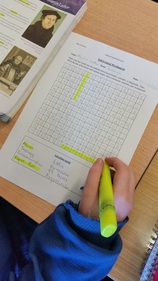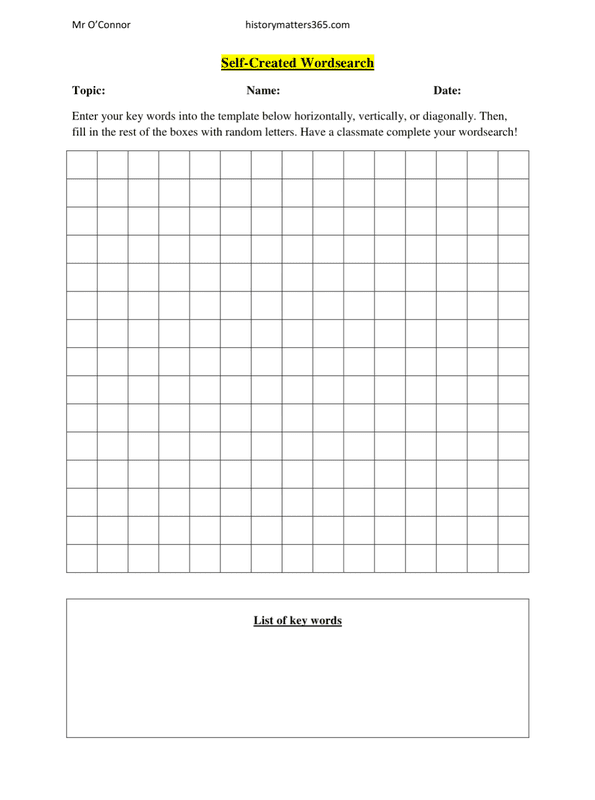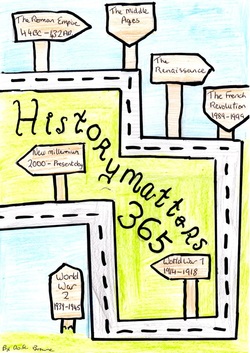 Martin Luther self-created wordsearch
Martin Luther self-created wordsearch Wordsearch puzzles are an excellent literacy tool for getting students to work with key historical terms. The strategy is particularly effective when introducing or reinforcing difficult concepts.
Traditionally, a teacher will make the wordsearch. Discovery Education Free Puzzlemaker is a super online tool for this purpose. The teacher prints, photocopies and distributes the wordsearch he/she has created. Students then work in pairs to solve the puzzle. Of course, this works very well. However, for a somewhat more effective approach, get your students to make their own wordsearch puzzles. It's more fun! They may use Discovery's online tool or a blank template.
Below is a blank template which can be used by students to self-create a wordsearch. Having studied a topic, a student must brainstorm 6-8 key terms and list in the box provided. These terms are then inserted horizontally, vertically or diagonally into the blank template. Hide the key terms by filling the remaining spaces with random letters. The student then swaps with a classmate who must solve the puzzle using a highlighter.
This strategy can also be used for homework. Having created the wordsearch at home, a student will swap with a classmate at the beginning of the next lesson. This helps with recall of what was learned the previous lesson.
I advise teachers to extend the learning by using the key words generated by the students to form a scatter diagram on the whiteboard. The scatter diagram can then be used as an aid for discussion and questioning.
Traditionally, a teacher will make the wordsearch. Discovery Education Free Puzzlemaker is a super online tool for this purpose. The teacher prints, photocopies and distributes the wordsearch he/she has created. Students then work in pairs to solve the puzzle. Of course, this works very well. However, for a somewhat more effective approach, get your students to make their own wordsearch puzzles. It's more fun! They may use Discovery's online tool or a blank template.
Below is a blank template which can be used by students to self-create a wordsearch. Having studied a topic, a student must brainstorm 6-8 key terms and list in the box provided. These terms are then inserted horizontally, vertically or diagonally into the blank template. Hide the key terms by filling the remaining spaces with random letters. The student then swaps with a classmate who must solve the puzzle using a highlighter.
This strategy can also be used for homework. Having created the wordsearch at home, a student will swap with a classmate at the beginning of the next lesson. This helps with recall of what was learned the previous lesson.
I advise teachers to extend the learning by using the key words generated by the students to form a scatter diagram on the whiteboard. The scatter diagram can then be used as an aid for discussion and questioning.
| |||


